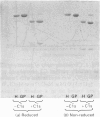Abstract
A method has been developed for the purification to homogeneity of guinea-pig complement component C2. Contrary to previous reports, guinea-pig C2 is a single polypeptide chain with apparent mol.wt. of 102000, the same as human C2. It is cleaved by C1s to yield fragments C2a (apparent molwt. 74000) and C2b (apparent mol.wt. 34000). The amino acid composition and N-terminal sequences of these fragments are similar to those of human C2a and C2b. Human and guinea-pig C2 show more extensive sequence homology to Factor B than previously identified. The known homology around the sites of cleavage by C1s and Factor D has now been extended by a stretch of ten identical or conservatively substituted residues. Sequence homology has now been identified at the N-terminal of C2b and Factor Ba. The properties of the classical-pathway C3 convertases assembled from human C4b, C1s and human or guinea-pig C2 have been compared. The rates of cleavage of human and guinea-pig C2 by C1s (and therefore the rates of assembly of the C3 convertases) are similar. The rate of decay of the activity of the C3 convertase formed from guinea-pig C2 is 10-fold lower than for human C2. This greater stability reflects a higher affinity of guinea-pig C2a for human C4b. The presence of C2b is not necessary for C3 convertase activity.
Full text
PDF
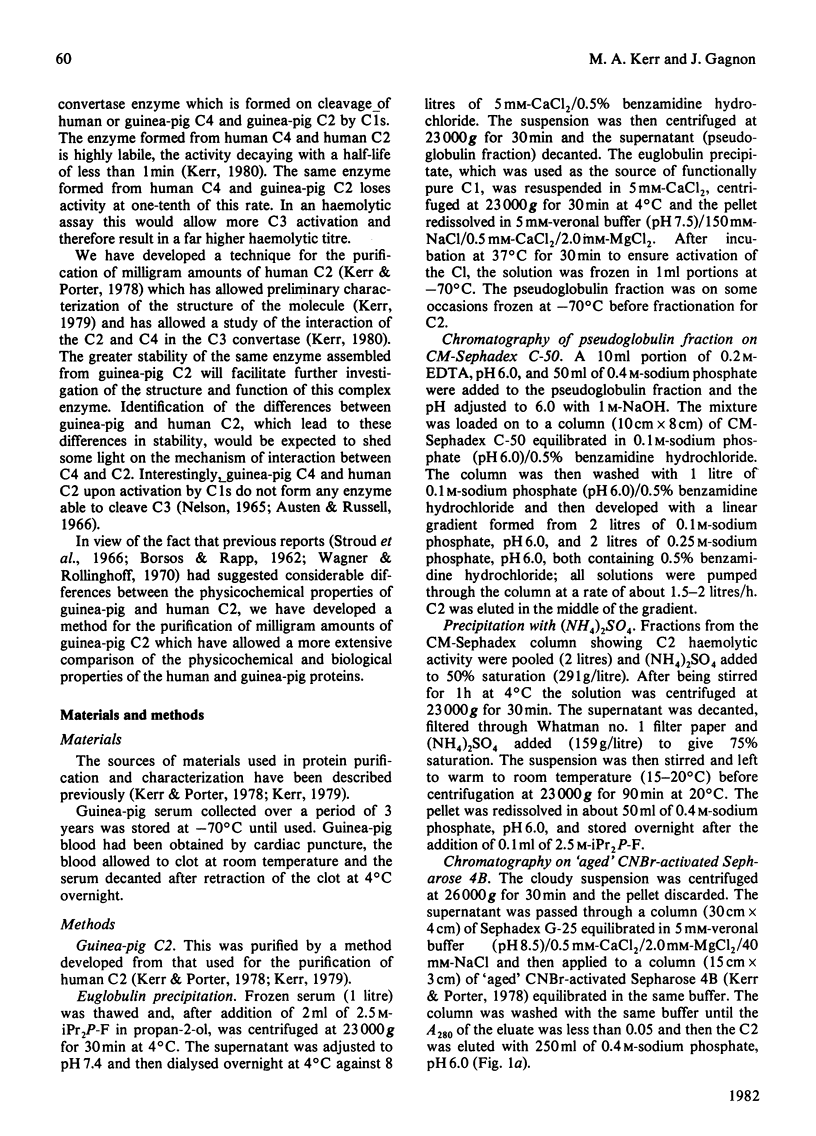
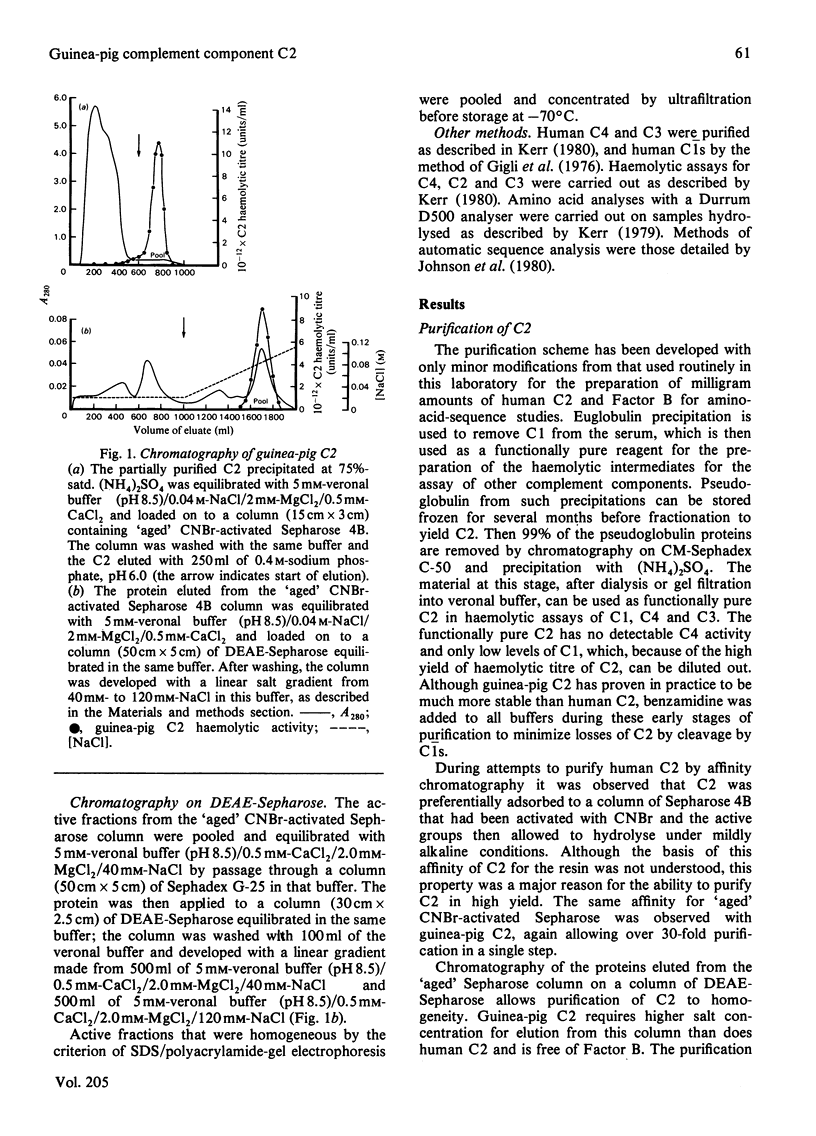
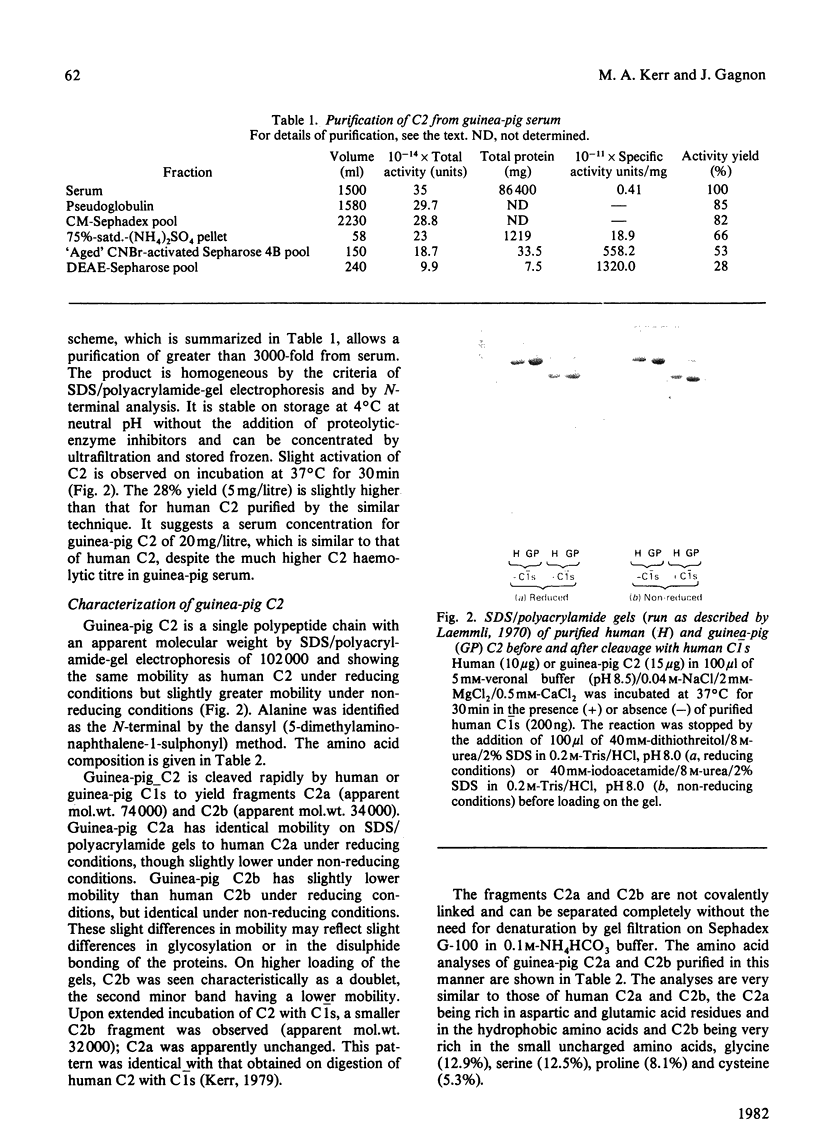
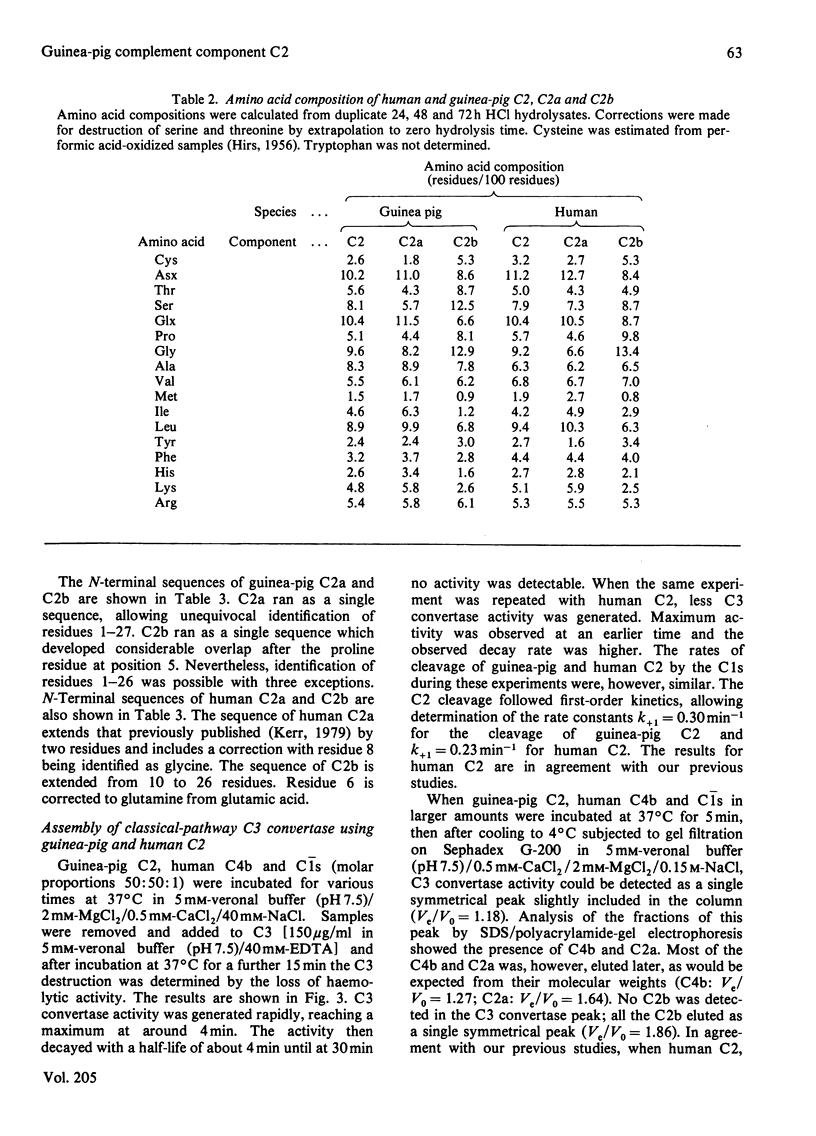
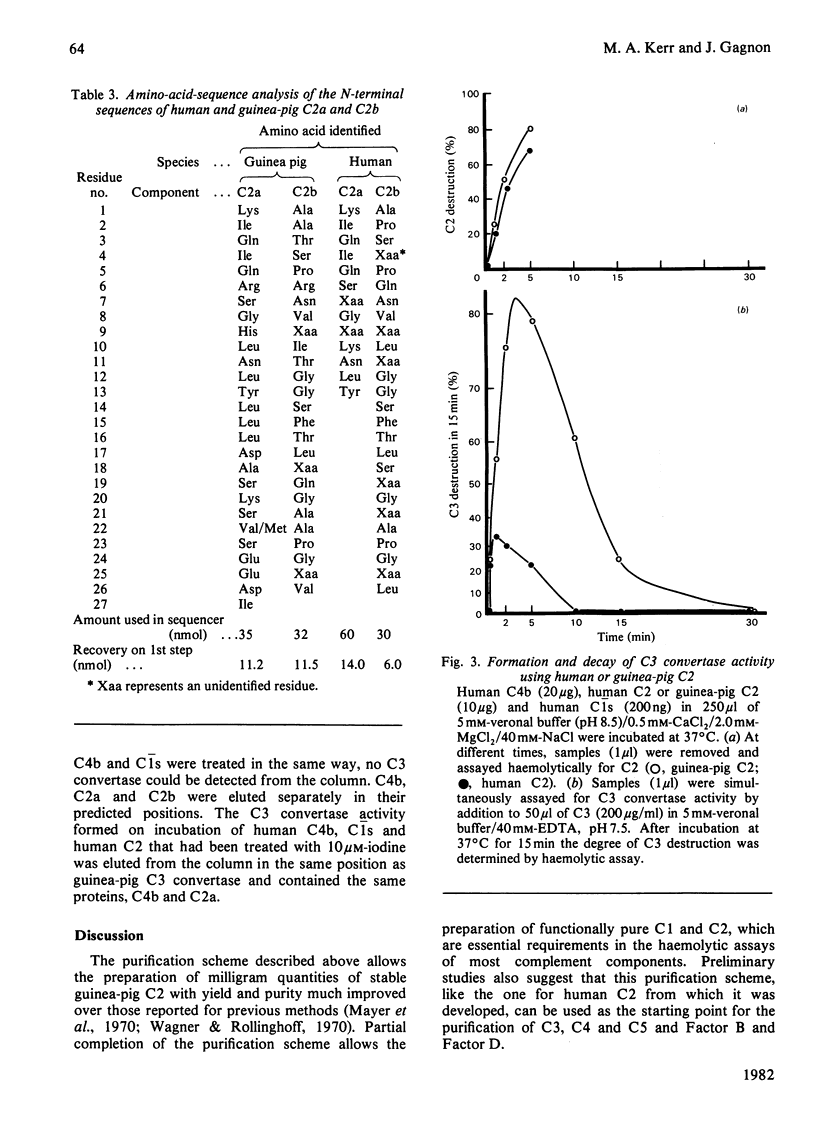
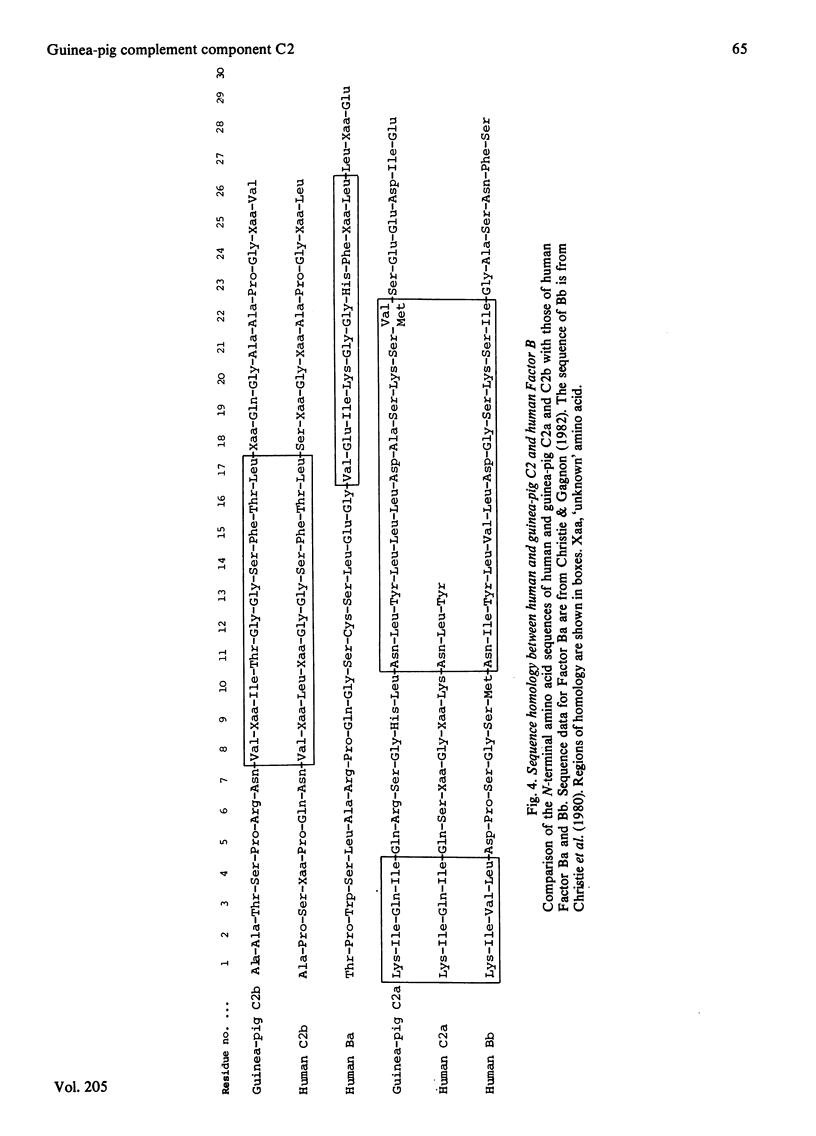
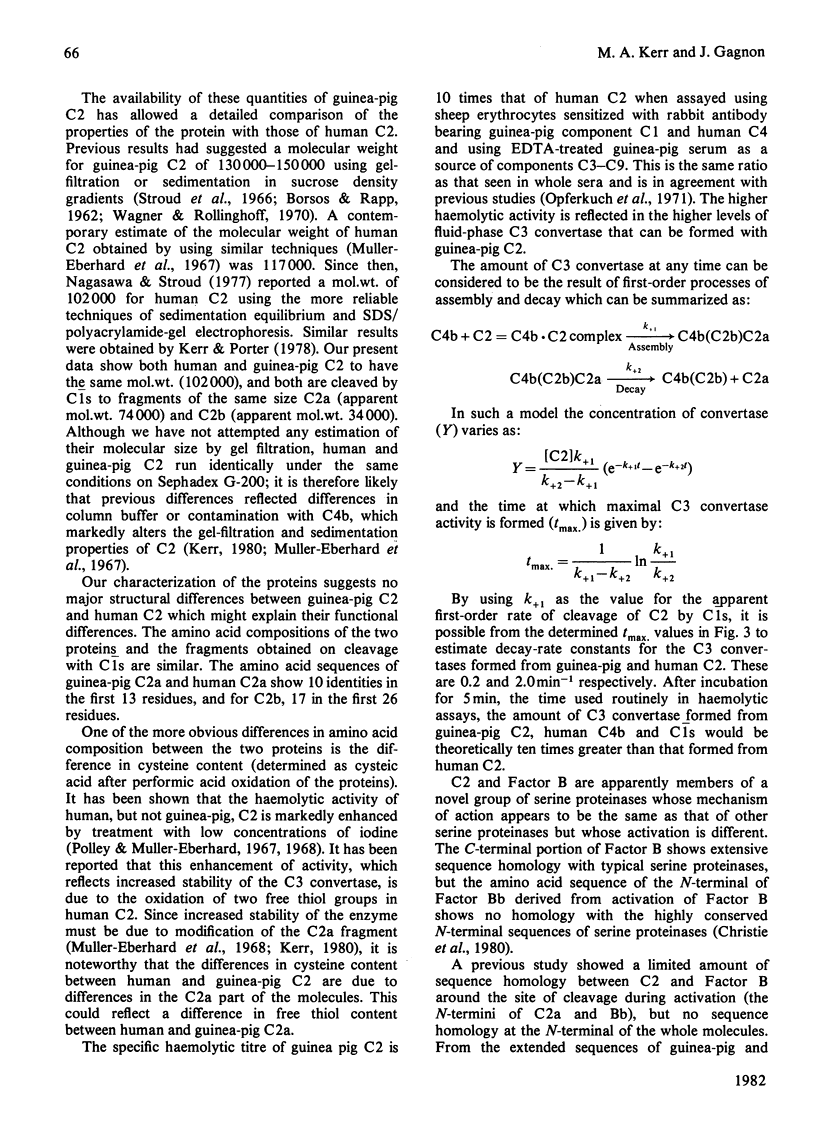
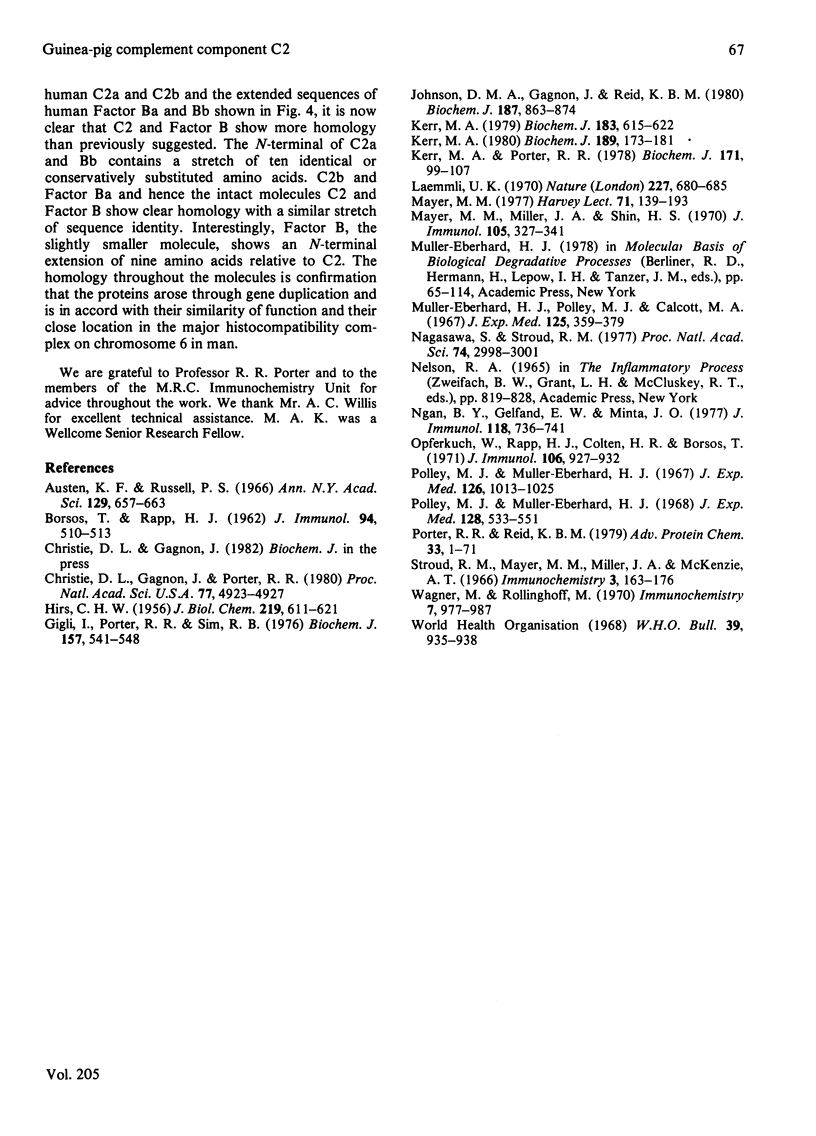
Images in this article
Selected References
These references are in PubMed. This may not be the complete list of references from this article.
- BORSOS T., RAPP H. J. ESTIMATION OF MOLECULAR SIZE OF COMPLEMENT COMPONENTS BY SEPHADEX CHROMATOGRAPHY. J Immunol. 1965 Apr;94:510–513. [PubMed] [Google Scholar]
- Christie D. L., Gagnon J., Porter R. R. Partial sequence of human complement component factor B: novel type of serine protease. Proc Natl Acad Sci U S A. 1980 Aug;77(8):4923–4927. doi: 10.1073/pnas.77.8.4923. [DOI] [PMC free article] [PubMed] [Google Scholar]
- Gigli I., Porter R. R., Sim R. B. The unactivated form of the first component of human complement, C1. Biochem J. 1976 Sep 1;157(3):541–548. doi: 10.1042/bj1570541. [DOI] [PMC free article] [PubMed] [Google Scholar]
- HIRS C. H. The oxidation of ribonuclease with performic acid. J Biol Chem. 1956 Apr;219(2):611–621. [PubMed] [Google Scholar]
- Johnson D. M., Gagnon J., Reid K. B. Factor D of the alternative pathway of human complement. Purification, alignment and N-terminal amino acid sequences of the major cyanogen bromide fragments, and localization of the serine residue at the active site. Biochem J. 1980 Jun 1;187(3):863–874. doi: 10.1042/bj1870863. [DOI] [PMC free article] [PubMed] [Google Scholar]
- Kerr M. A. Limited proteolysis of complement components C2 and factor B. Structural analogy and limited sequence homology. Biochem J. 1979 Dec 1;183(3):615–622. doi: 10.1042/bj1830615. [DOI] [PMC free article] [PubMed] [Google Scholar]
- Kerr M. A., Porter R. R. The purification and properties of the second component of human complement. Biochem J. 1978 Apr 1;171(1):99–107. doi: 10.1042/bj1710099. [DOI] [PMC free article] [PubMed] [Google Scholar]
- Kerr M. A. The human complement system: assembly of the classical pathway C3 convertase. Biochem J. 1980 Jul 1;189(1):173–181. doi: 10.1042/bj1890173. [DOI] [PMC free article] [PubMed] [Google Scholar]
- Laemmli U. K. Cleavage of structural proteins during the assembly of the head of bacteriophage T4. Nature. 1970 Aug 15;227(5259):680–685. doi: 10.1038/227680a0. [DOI] [PubMed] [Google Scholar]
- Mayer M. M., Miller J. A., Shin H. S. A specific method for purification of the second component of guinea pig complement and a chemical evaluation of the one-hit theory. J Immunol. 1970 Aug;105(2):327–341. [PubMed] [Google Scholar]
- Müller-Eberhard H. J., Polley M. J., Calcott M. A. Formation and functional significance of a molecular complex derived from the second and the fourth component of human complement. J Exp Med. 1967 Feb 1;125(2):359–380. doi: 10.1084/jem.125.2.359. [DOI] [PMC free article] [PubMed] [Google Scholar]
- Nagasawa S., Stroud R. M. Cleavage of C2 by C1s into the antigenically distinct fragments C2a and C2b: demonstration of binding of C2b to C4b. Proc Natl Acad Sci U S A. 1977 Jul;74(7):2998–3001. doi: 10.1073/pnas.74.7.2998. [DOI] [PMC free article] [PubMed] [Google Scholar]
- Ngan B. Y., Gelfand E. W., Minta J. O. A simple one-step hemolytic assay for C2 with C2-deficient human serum. J Immunol. 1977 Mar;118(3):736–741. [PubMed] [Google Scholar]
- Opferkuch W., Rapp H. J., Colten H. R., Borsos T. Immune hemolysis and the functional properties of the second (C2) and fourth (C4) components of complement. 3. The hemolytic efficiency of human and guinea pig C2 and C4. J Immunol. 1971 Apr;106(4):927–931. [PubMed] [Google Scholar]
- Polley M. J., Müller-Eberhard H. J. Enharncement of the hemolytic activity of the second component of human complement by oxidation. J Exp Med. 1967 Dec 1;126(6):1013–1025. doi: 10.1084/jem.126.6.1013. [DOI] [PMC free article] [PubMed] [Google Scholar]
- Polley M. J., Müller-Eberhard H. J. The second component of human complement: its isolation, fragmentation by C'1 esterase, and incorporation into C'3 convertase. J Exp Med. 1968 Sep 1;128(3):533–551. doi: 10.1084/jem.128.3.533. [DOI] [PMC free article] [PubMed] [Google Scholar]
- Porter R. R., Reid K. B. Activation of the complement system by antibody-antigen complexes: the classical pathway. Adv Protein Chem. 1979;33:1–71. doi: 10.1016/s0065-3233(08)60458-1. [DOI] [PubMed] [Google Scholar]
- Stroud R. M., Mayer M. M., Miller J. A., McKenzie A. T. C'2ad, an inactive derivative of C'2 released during decay of EAC'4,2a. Immunochemistry. 1966 May;3(3):163–176. doi: 10.1016/0019-2791(66)90182-0. [DOI] [PubMed] [Google Scholar]
- Wagner H., Röllinghoff M. C2--the second component of guinea pig complement: purification and physico-chemical characterization. Immunochemistry. 1970 Dec;7(12):977–987. doi: 10.1016/0019-2791(70)90004-2. [DOI] [PubMed] [Google Scholar]



